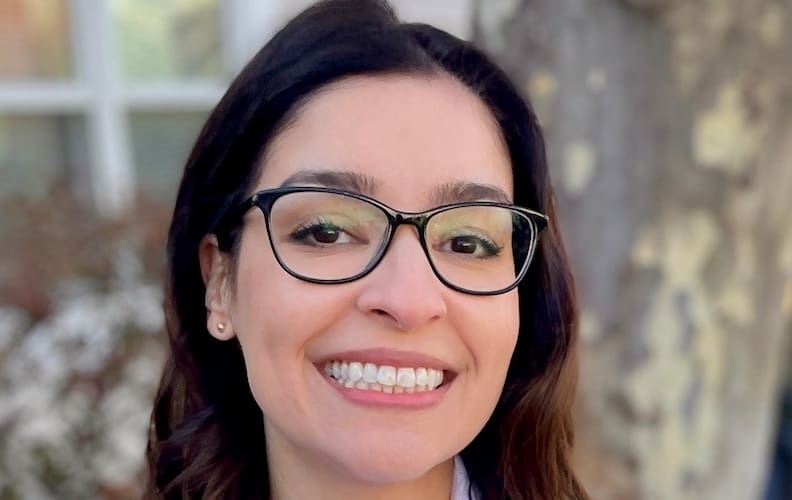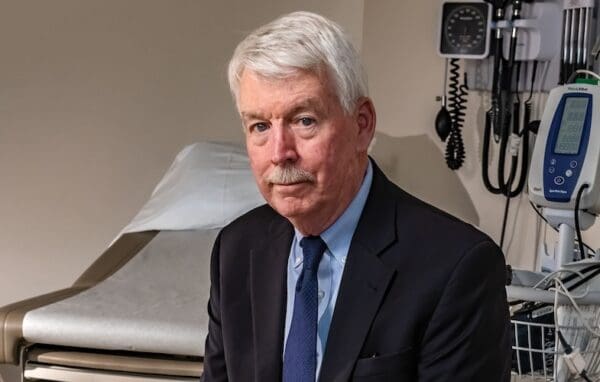
CLF's Caty Taborda brings ambitious goals to CLF: addressing environmental health disparities in New England. Photo: Courtesy Caty Taborda
CLF’s new director of research and metrics has spent her career examining health inequity. Now, she brings an ambitious goal to CLF: addressing environmental health disparities across New England.
What does your research work at CLF look like?
Our research is about supporting the health and well-being of communities by looking at the impacts of housing, climate change, and neighborhood development. Our environment plays a huge role in community health, with everything from air quality and walkability to heating costs and access to clean water all impacting how people live, work, and play. One of our most important projects is the Healthy Neighborhoods Study, launched in 2015, which assesses how these factors intersect.
What makes the Healthy Neighborhoods Study unique?
The Healthy Neighborhoods Study puts residents’ voices, expertise, and interests at the center of the work. It does this by using participatory action research, an approach to research grounded in the belief that those most directly impacted by a problem are in the best position to understand and solve it. CLF and other institutional partners provide the support and resources, but community members are in the driver’s seat. Community members decide which research questions to pursue, which methods to use, and which outcomes they want to see in their neighborhoods.
As far as we know, the Healthy Neighborhoods Study is the largest participatory action research study in the U.S., making it a model for how institutions and community organizers can collaborate and share collective power toward transformative solutions.
How does your research enhance CLF’s advocacy?
Research doesn’t just enhance our advocacy, it can strengthen and even shape it. For example, our research shows that communities with strong social ties are better equipped to handle disasters triggered by our changing climate. In other words, when neighbors know each other well – who in the community are vulnerable, for example, or who live alone – the community can come together to support each other during storms, heat waves, or flooding. We can then use this finding to advocate for projects that protect communities against displacement, which breaks social ties and weakens communities’ ability to recover from negative environmental impacts. As we expand our research projects, I’m excited to develop new strategies for pairing our community research with our advocacy across New England.
How did you get involved in community-based research?
I believe research is a powerful tool for creating societal change. But before joining CLF I was an academic researcher studying health inequities. I gathered data primarily through interviews and focus groups, yet I still felt disconnected from the work even though I was talking with so many people. I increasingly found myself gravitating toward more collaborative opportunities with people who prioritized partnership, action, and creativity.
Why are issues like gentrification and neighborhood development important to the environmental movement?
Understanding how these issues intersect is crucial to creating impactful policy solutions. But we can’t even begin to understand those intersections without considering structural inequalities. For example, study after study shows that race is the most significant risk factor determining whether or not you live near a hazardous waste disposal facility. This is not a coincidence; it is by design. Racist policies like redlining have historically segregated and devalued nonwhite communities, pushing lower-income people of color into neighborhoods close to hazardous waste sites full of harmful environmental toxins.
Another problem we are seeing now is “climate gentrification.” This happens when new or redeveloped buildings that can withstand the impacts of climate change drive up housing costs and force lower-income people out of their neighborhoods. This is why the environmental movement must factor gentrification and neighborhood development into our work – we must prioritize making safe, climate-resilient housing accessible to and inclusive of everyone.
Bonus question: You’re a native of Buffalo, New York; what drew you to New England?
The autumn foliage, the lobster rolls, the landscapes, but above all I absolutely love the people here. I’ve lived and traveled all over the country, and I always say that New Englanders are – next to Buffalonians – some of the most genuine, kind, and neighborly people you can encounter.



